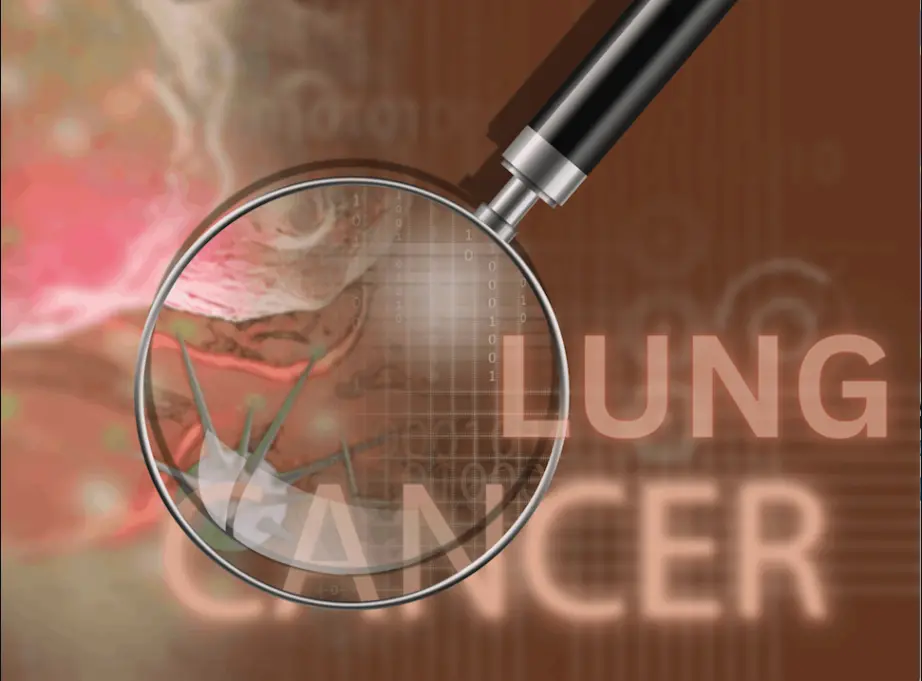According to researchers at Columbia Engineering, they have developed a preclinical evaluation pipeline for assessing the effectiveness of bacterial therapies in lung cancer models. In the new study, published in Scientific Reports, the researchers combined bacterial therapies with other treatment methods in order to improve treatment outcomes without increasing toxicity. This approach allowed for the rapid evaluation of bacterial therapies and their successful integration with current targeted therapies for lung cancer.
Lung cancer is one of the primary causes of death globally, and the current treatments for it have often proven ineffective. Bacterial therapy, a new approach to cancer treatment, has shown promise in recent years and has moved from laboratory experiments to clinical trials. However, the most effective treatment for some types of cancer may involve using bacterial therapy in combination with other medications.
What is Combination Therapy in Cancer Treatment?
Combination therapy, which involves the use of two or more treatments in combination to target cancer cells, is increasingly being explored as a way to improve the effectiveness of cancer treatments. The goal of combination therapy is to improve the effectiveness of cancer treatment by targeting cancer cells in multiple ways and increasing the chances of destroying the cancer cells or preventing them from growing and spreading.
Combination therapy can involve different types of treatments, such as chemotherapy, radiation therapy, targeted therapy, and immunotherapy. One promising area of research is the use of engineered bacterial therapeutics in combination with other therapies to treat non-small cell lung cancer (NSCLC).
NSCLC, the most common type of lung cancer, is often resistant to traditional chemotherapy and radiation treatments. As a result, there is a need to develop new and innovative treatment approaches that can improve outcomes for patients with NSCLC.
New Bacterial Therapy
Engineered bacterial therapeutics are living cells that have been genetically modified to produce therapeutic molecules or to attack cancer cells directly. These therapies have shown promise in preclinical studies and early-stage clinical trials for the treatment of NSCLC.
One potential approach for the design of combination therapy for NSCLC is to combine engineered bacterial therapeutics with targeted therapies, which are designed to specifically target the molecular abnormalities that drive the growth of cancer cells. Targeted therapies have been shown to be effective in the treatment of NSCLC and could potentially be used in combination with engineered bacterial therapeutics to enhance their effectiveness further.
Another approach that has shown promise in preclinical studies is the combination of engineered bacterial therapeutics with immune-based therapies. Immune-based therapies, such as immune checkpoint inhibitors, are designed to help the body’s own immune system recognize and attack cancer cells. Combining these therapies with engineered bacterial therapeutics could potentially boost the immune system’s ability to fight cancer and improve outcomes for patients with NSCLC.
There are also ongoing efforts to combine engineered bacterial therapeutics with traditional chemotherapy agents. This approach could potentially enhance the effectiveness of chemotherapy while minimizing its toxic side effects.
The team conducted RNA sequencing to investigate the cellular and molecular effects of bacteria on cancer cells. They formulated a hypothesis about the molecular pathways that enable cancer cells to resist bacteria therapy and tested it by using existing cancer drugs to block these pathways. They found that combining these drugs with bacterial toxins was more effective at destroying lung cancer cells. To illustrate this point, the researchers demonstrated the effectiveness of combining bacteria therapy with an AKT inhibitor in mouse models of lung cancer.
This study presents a previously unexplored approach to drug development for lung cancer using toxins derived from bacteria. The preclinical data in the study support further research in this area and the potential for new treatment options for patients with this deadly disease.
The researchers are further planning to conduct additional studies using larger preclinical models of hard-to-treat lung cancers and work with clinical professionals to bring the strategy to clinical practice.
Conclusion
The design of combination therapy for NSCLC using engineered bacterial therapeutics is an exciting area of research that has the potential to improve outcomes for patients with this challenging disease significantly. Further research is needed to fully comprehend the optimal combination and dosage of these therapies, as well as their potential risks and benefits.
Article Source: Reference Paper | Reference Article
Learn More:
Top Bioinformatics Books ↗
Learn more to get deeper insights into the field of bioinformatics.
Top Free Online Bioinformatics Courses ↗
Freely available courses to learn each and every aspect of bioinformatics.
Latest Bioinformatics Breakthroughs ↗
Stay updated with the latest discoveries in the field of bioinformatics.
Dr. Tamanna Anwar is a Scientist and Co-founder of the Centre of Bioinformatics Research and Technology (CBIRT). She is a passionate bioinformatics scientist and a visionary entrepreneur. Dr. Tamanna has worked as a Young Scientist at Jawaharlal Nehru University, New Delhi. She has also worked as a Postdoctoral Fellow at the University of Saskatchewan, Canada. She has several scientific research publications in high-impact research journals. Her latest endeavor is the development of a platform that acts as a one-stop solution for all bioinformatics related information as well as developing a bioinformatics news portal to report cutting-edge bioinformatics breakthroughs.






